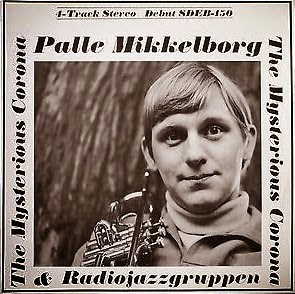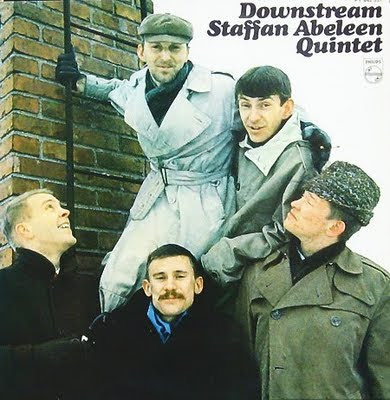NEIL ARDLEY - HARMONY OF THE SPHERES
Neil Ardley for Decca from 1979.
What better way to celebrate a birthday than with this great piece of British jazz by Neil Ardley?
Neil Ardley:Synthesizers;John Martyn:Guitars;Billy Kristian:bass;Geoff Castle:Piano,Minimoog;Richard Burgess:Drums;Trevor Tomkins:Percussion;Barbara Thompson:Flute,Soprano Sax;Tony Coe:Clarinet,Soprano Sax;Ian Carr:Trumpet,Flugelhorn;Pepi Lemer,Norma Winstone:Voices (What a line up !!!)
Highly Recommended.
I lifted this write up from the Neil Ardley site:
Neil Ardley based this 1978 album on the ancient idea of the Harmony of the Spheres, the idea that each planet produces a musical note related to its orbit. It was reasoned that, as everything in the heavens is perfect, the notes must sound together to produce a perfect harmony. Neil Ardley synthesized the actual harmony of the spheres, deriving the frequencies of the notes from the orbital periods of the planets. It can be heard in the all-synthesizer track Soft Stillness and the Night, and it is appropriately mysterious and dramatic.
The album features John Martyn on guitar over a rich orchestral sound mixing electronic with acoustic instruments and voices. Harmony of the Spheres was the subject of a 30-minute film directed by Peter Walker and shown on ITV's The South Bank Show in 1979.
AMG:The British composer Neil Ardley did a great deal of work with his country's best modern jazz musicians. His arrangements and compositions involve aspects of classical music's ambitious compositional outlook somewhat differently than the better-known third stream efforts of American jazzmen such as John Lewis or George Russell. Ardley graduated from Bristol University in the late '50s and went on to study arranging and composition with Raymond Premru and Bill Russo. By 1964, the one-on-one sessions with these theorists were several years behind him and he was directing an ensemble called the New Jazz Orchestra. The idea in this band was to assemble a group of good players and improvisers who would also want to contribute their own compositions to the repertoire.
The lineup of names in this group could pass for someone's collection of British jazz: Harry Beckett, Jack Bruce, Ian Carr, Mike Gibbs, Jon Hiseman, Barbara Thompson, and Norma Winstone, to name a few. Eventually, Ardley began leading an orchestra under his own name as well, with so many musicians overlapping from the initial orchestra that the two groups became mixed up with each other, as well as being mixed up with the sometimes surreal compositions they wound up performing. Ardley's creative activity between 1969 and 1981 included Kaleidoscope of Rainbows, a work in many movements that the Gull label put out on vinyl in 1976, and Harmony of the Spheres followed a few years later. In the '80s, writing about music took up a great deal of Ardley's time, including the 1986 publication of the brilliant Music: An Illustrated Encyclopedia. Compositions from Ardley's later periods also involve the combination of electronic music with traditional instruments from the jazz lineup. As a player, Ardley shows up on a vintage Nucleus album. Ardley continued to explore and became interested in choral music in the 2000's. He passed away in February of 2004, shortly after completing a new choral composition. ~ Eugene Chadbourne
Ripped @320 from the original vinyl-reissued on cd in Japan in 2000 which now has been long deleted.


